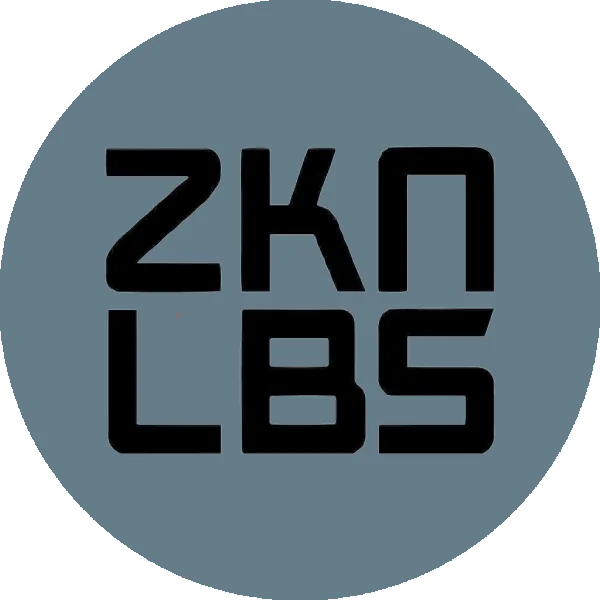Understanding the Basics of Polkadot Crypto
Polkadot (DOT) has emerged as a groundbreaking technology in cryptocurrency, revolutionizing how we perceive blockchain networks. Created by the Web3 Foundation, Polkadot offers a unique interoperability, scalability, and governance approach, making it a game-changer in the crypto industry. At its core, DOT aims to solve one of the most pressing challenges in the blockchain ecosystem: the need for interoperability. Traditional blockchains operate in isolation, unable to communicate and share data effectively. On the other hand, Polkadot breaks down these barriers by introducing a novel framework that enables different blockchains to connect and interact seamlessly. Polkadot crypto's fundamental concept is a "relay chain" that acts as a central hub, facilitating communication between various independent blockchains called "parachains." Parachains are purpose-built chains that can be customized for specific use cases, providing flexibility and scalability to the Polkadot network. One of the key strengths of Polkadot lies in its consensus mechanism known as Nominated Proof of Stake (NPoS). Unlike traditional Proof of Work (PoW) or Proof of Stake (PoS) mechanisms, NPoS combines both benefits by allowing token holders to nominate validators who participate in block production and finalization. This unique approach ensures security, decentralization, and efficiency within the Polkadot network. Moreover, Polkadot crypto introduces the concept of "parathreads," similar to parachains but more flexible. Parathreads allow projects to connect to Polkadot without needing a dedicated parachain slot, making it more accessible and cost-effective for smaller-scale projects. This innovation enhances the network's scalability and inclusivity.
Interoperability: The Key Strength of Polkadot
Interoperability, the ability of different systems to communicate and work together seamlessly, has long been a challenge in the blockchain space. Traditional blockchains operate as isolated silos, lacking the infrastructure to exchange information and assets effectively. This limitation inhibits collaboration, hampers innovation, and restricts the growth of the overall ecosystem. With its innovative architecture, Polkadot Crypto aims to overcome this challenge by providing a robust and scalable solution for blockchain interoperability. By enabling different blockchains to connect and communicate, Polkadot unlocks a world of possibilities and synergies between disparate networks.
How Polkadot Bridges the Gap Between Different Blockchains
At the heart of Polkadot's interoperability framework is the Relay Chain, a central hub coordinating and facilitating communication between parachains. Parachains, as mentioned earlier, are specialized blockchains that can be tailored to specific use cases and applications. The Relay Chain employs a unique protocol called the Cross-Chain Message Passing (XCMP) to enable secure and efficient communication between parachains. XCMP allows transferring messages, assets, and data across the Polkadot crypto network, ensuring seamless interoperability. Polkadot's approach only requires consensus across some participating chains, unlike other interoperability solutions, such as atomic swaps or sidechains. Instead, each parachain maintains its consensus mechanism, allowing for greater flexibility and scalability.
Cross-Chain Communication with DOT
Polkadot's interchain communication capabilities extend beyond the Polkadot crypto network itself. It also enables communication with external blockchains, creating a truly inclusive and interconnected ecosystem. It is made possible through the use of bridges. Bridges serve as connectors between Polkadot and other blockchain networks. They facilitate the transfer of assets and data between the different chains, bridging the gap and fostering collaboration. Polkadot's bridge technology supports one-way and two-way communication, allowing seamless integration with external networks. The ability to bridge different blockchains opens up a wide range of use cases and opportunities for innovation. Here are a few examples:
Cross-Chain Asset Transfers
Polkadot's bridges enable the seamless transfer of assets between different blockchains. It paves the way for decentralized exchanges, where users can trade assets across multiple chains without intermediaries.
Interoperable Decentralized Finance (DeFi)
Polkadot's interoperability features are particularly beneficial for the DeFi ecosystem. It aggregates liquidity from multiple chains, enabling cross-chain lending, yield farming, and other DeFi applications.
Collaborative Blockchain Networks
Its interoperability framework encourages collaboration and cooperation between blockchain networks. Projects from different chains can combine their strengths and resources to build more comprehensive and powerful decentralized applications.
Exploring the Role of Parachains in the Polkadot Network
Parachains are the foundational building blocks of the Polkadot crypto network, playing a crucial role in its overall functionality. A parachain is an independent blockchain operating within the Polkadot ecosystem , connected to the Relay Chain through a secure and efficient communication protocol. Parachains offer several key advantages over traditional standalone blockchains. First and foremost, they benefit from the security and scalability of the Polkadot crypto network. By sharing the security infrastructure of the Relay Chain, parachains can focus on their specific use cases and functionalities without compromising on security or performance. In addition, parachains can leverage the interoperability features of Polkadot crypto to communicate and collaborate with other parachains. This cross-chain communication opens up a world of possibilities for decentralized applications, allowing them to utilize resources and data from multiple chains.
Polkadot's Consensus Mechanism: Nominated Proof of Stake (NPoS)
To ensure the security and integrity of the network, Polkadot employs a consensus mechanism known as Nominated Proof of Stake (NPoS). NPoS combines the benefits of traditional Proof of Stake (PoS) and nominated validators to achieve a robust and decentralized consensus. In the NPoS model, token holders can nominate validators responsible for block production and finalization. This delegation of responsibility ensures that the network remains secure while indirectly allowing token holders to participate in the consensus process. Validators on DOT are selected based on their reputation and stake, with higher-staked validators having a greater chance of being elected. It incentivizes validators to act honestly and maintain the integrity of the network. NPoS also allows for the efficient management of resources and facilitates upgrades and changes to the network through governance mechanisms.
Parathreads: Scalability and Flexibility
In addition to parachains, Polkadot crypto introduces the concept of parathreads. Parathreads are similar to parachains but provide a more flexible and cost-effective option for projects with lower resource requirements. Unlike parachains that require a dedicated parachain slot, parathreads can share spaces by paying a fee based on their usage. It allows projects to access the benefits of Polkadot's security and interoperability without needing a full-time parachain slot. Parathreads are particularly useful for applications with intermittent or sporadic usage patterns. By dynamically acquiring and releasing a parachain slot as needed, projects can optimize their resource allocation and reduce costs, making Polkadot more accessible to a broader range of projects.

Bridges: Connecting Polkadot to External Networks
Polkadot's interoperability extends beyond its ecosystem. Polkadot can establish connections and facilitate communication with external blockchain networks through bridges. Bridges serve as crucial gateways, enabling the transfer of assets, data, and messages between Polkadot and other blockchains. The primary purpose of bridges is to break down the barriers between different blockchain networks, allowing them to collaborate and share resources effectively. By bridging Polkadot with external networks, projects can tap into the strengths and capabilities of multiple blockchains, unlocking new opportunities for innovation and collaboration. The introduction of bridges in the Polkadot ecosystem opens up a myriad of use cases and possibilities. Here are a few examples of how bridges enhance interoperability:
Cross-Chain Asset Transfers
Bridges enable the seamless transfer of assets between Polkadot and external blockchains. This capability is precious for decentralized exchanges, where users can trade assets across chains without relying on centralized intermediaries. Bridges facilitate the transfer of tokens while ensuring security and transparency.
Enhanced Liquidity and Market Access
Polkadot's bridges allow liquidity aggregation from multiple chains, creating a more vibrant and liquid market environment. Increased liquidity benefits users by providing better trading opportunities and access to a broader range of assets.
Collaboration and Synergy
Bridges foster collaboration between projects on different blockchains. Developers and entrepreneurs can leverage each chain's unique features and strengths to build more comprehensive and powerful decentralized applications. By bridging networks, Polkadot encourages cross-chain collaboration, enabling projects to combine resources and expertise for mutual benefit.
Exploring the Future of Polkadot's Bridge Technology
Polkadot's bridge technology continuously evolves, with ongoing research and development efforts to enhance its capabilities. As the ecosystem grows and more bridges are established, we can expect security, scalability, and interoperability advancements. One area of focus for future developments is improving the security of bridges. Ensuring the integrity and reliability of asset transfers and data exchange between different networks is paramount. Polkadot aims to build trust and confidence in its bridge technology by implementing robust security measures. Scalability is another key consideration for bridge technology. As the Polkadot network expands and more projects seek to bridge with external chains, it is crucial to maintain high performance and efficiency. Continued optimization and innovation will be essential in meeting the scalability demands of a growing ecosystem. Furthermore, Polkadot aims to expand the reach of its bridge technology by supporting a wider range of blockchain networks. Polkadot can enhance its interoperability and attract diverse projects and users by establishing bridges with popular chains.
Real-World Applications and Benefits of Polkadot Crypto in IoT
The application of Polkadot in IoT extends to various industries and use cases. Here are a few examples:
Supply Chain and Logistics
Polkadot's interoperability allows for transparent and efficient tracking of goods and assets throughout the supply chain. IoT devices equipped with sensors can collect real-time data on the location, temperature, and condition of goods, ensuring transparency, traceability, and quality control.
Smart Cities
Polkadot's scalability and interoperability enable the integrating of diverse IoT devices and systems in smart cities. By seamlessly exchanging data between devices, cities can optimize resource allocation, improve traffic management, enhance public safety, and create more sustainable environments.
Industrial Automation
Polkadot's secure and efficient communication protocol enables IoT devices to interact and exchange data in industrial automation settings. It facilitates process automation, predictive maintenance, and real-time monitoring, enhancing productivity, reducing downtime, and improving overall operational efficiency. The combination of Polkadot's features, such as interoperability, scalability, and security, with the vast potential of IoT technologies unlocks innovative solutions and creates new business opportunities across industries. At PlasBit, we are dedicated to researching and studying most of the cryptocurrencies and details in the Web3 space, and you can learn more educational articles on our blog!







